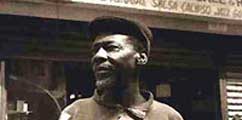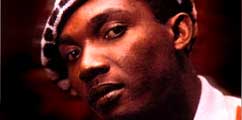For many, rock steady is the
pinnacle of Jamaican music – indeed, so many recent dancehall
tunes are built of classic rock steady rhythms from the
mid-1960s. The rock steady era followed directly from ska to
contrast it in several ways: it slowed the beat down; it was
essentially a vocal style; and it was deliberately American as
opposed from ska which had worked hard to establish a Jamaican
identity. Rock steady was a much cooler, soulful, lovers rock
type of music that began life as a means of giving the crowds
a bit of a breather and, due to public demand, took over to
dominate dancehalls for several years.
The backbone of
rock steady was the singers as, after years of ska’s accent on
musical virtuosity and general volume level, the Jamaican love
of singing could come to the fore. Groups like The Heptones,
The Melodians, The Uniques, The Techniques, The Paragons and,
of course, The Wailers took their lead from the American soul
of The Impressions (who regularly toured Jamaica) and The
Drifters to produce a uniquely Jamaican approach to
harmonising – the lead constantly swapped within the group.
While solo stars such as John Holt, Slim Smith, Bob Andy, Ken
Boothe and Alton Ellis all came to prominence with this very
melodic style.
The top producers were Leslie Kong
(Desmond Dekker, Jimmy Cliff, The Melodians), Duke Reid (The
Paragons, The Tehniques, Phillis Dillon) and Coxsone Dodd (The
Heptones, Ken Boothe, Delroy Wilson). They altered the sound
of Jamaican music forever by introducing the electric bass and
building their backing tracks on that and drums. Today, many
of those original rock steady backing tracks remain so strong
that they form the basis for a wide range of dancehall hits.
|

